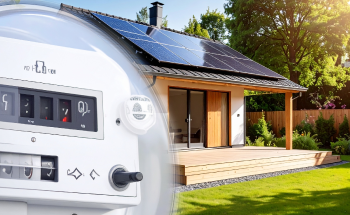Complete Guide to DNP3 Protocol Standards and Compliance Requirements
Shwetha Bhat February 13, 2025
Shwetha Bhat February 13, 2025
The DNP3 (Distributed Network Protocol 3) protocol, widely used in SCADA (Supervisory Control and Data Acquisition) systems, is governed by several standards and compliance requirements, especially in utilities and industry. Its implementations across vendors and applications have interoperability and security assurances and reliability under several standards and compliance requirements.
Here are the standards and compliance requirements that rule the DNP3 protocol implementations:
DNP3.0 The base standard for DNP3, providing the basic operation and data structures of the protocol.
DNP3.0 with Secure Authentication and Key Management (SAKM) Provides the security capabilities of authentication and encryption to DNP3. These elements help secure critical infrastructure sectors from cybersecurity threats.
IEEE 1815 Defines the DNP3 protocol for the communication interchange between SCADA master stations and RTUs/PLCs. It states details about data types, message formats, and guidelines for operations.
IEC 62351-5 gives security specifications for DNP3 and other SCADA protocols. It will concentrate on security mechanisms, for example, authentication, encryption, and key management.
IEC 60870-5 series : This actually forms the basis for other SCADA protocols, but certain components of these standards are pertinent in association with some DNP3 implementations, especially within the global utility sectors.
NERC-CIP (North American Electric Reliability Corporation - Critical Infrastructure Protection): Sets out cybersecurity requirements and standards for utilities in North America, DNP3 users included. Compliance means there will be a defense of critical infrastructure against cyber threats.
Utilities and industrial organizations may align with IEC 62351-5 as the foundation for the implementation of cybersecurity in DNP3 deployments. Compliance would mean acceptance of secure means for authentication, encryption, and integrity as provided within the standard.
In other sectors, such as water management, oil and gas, transportation, and manufacturing, regulations may be sector-specific and only suggest or force adoption using DNP3 with security and operational standards set by that sector.
Vendor-Specific Requirements
Organizations often require the vendors to comply with certain DNP3 standards and compliance frameworks in the procurement and deployment processes. This ensures compatibility and interoperability with the existing systems and networks.
Certification Programs: Organizations and/or regulatory bodies may provide certification programs or testing procedures which may be utilized to test DNP3 implementations against known standards and requirements for compliance.
Interoperability Testing: Interoperability testing among various products of a vendor and SCADA systems ensures the DNP3 implementations meet performance, compatibility, and security expectations.
Compliance to relevant and applicable standards and requirements is essential for utilities and industrial areas in the application of DNP3 in SCADA. This is because it:
- Boosts interoperability among different vendors' products and systems
- Enhances resilience in cybersecurity against evolving threats
- Has conformed to regulatory and industrial standards-creates an atmosphere of trust and reliability in operations of critical infrastructures.
If the organizations adhere to all these standards and compliance requirements, they can ensure that DNP3-based SCADA systems deployed and maintained effectively meet the stern demands of operational, security, and regulatory needs imposed in industrial environments today.

July 25, 2025
The world energy scene is being revolutionized by the fast-paced increase of decentralized renewable energy sources like rooftop solar, wind microturbines, and energy storage in batteries. batteries. The driving force…
Know More
July 25, 2025
Smart metering has evolved significantly over the last two decades as it became a building block of modern energy management solutions. At the core of the evolution is the DLMS/COSEM…
Know More
July 25, 2025
As the energy sector undergoes rapid digital transformation, smart metering has emerged as a foundational technology in modern utility networks. By enabling real-time monitoring, automated billing, and remote disconnection, smart…
Know More